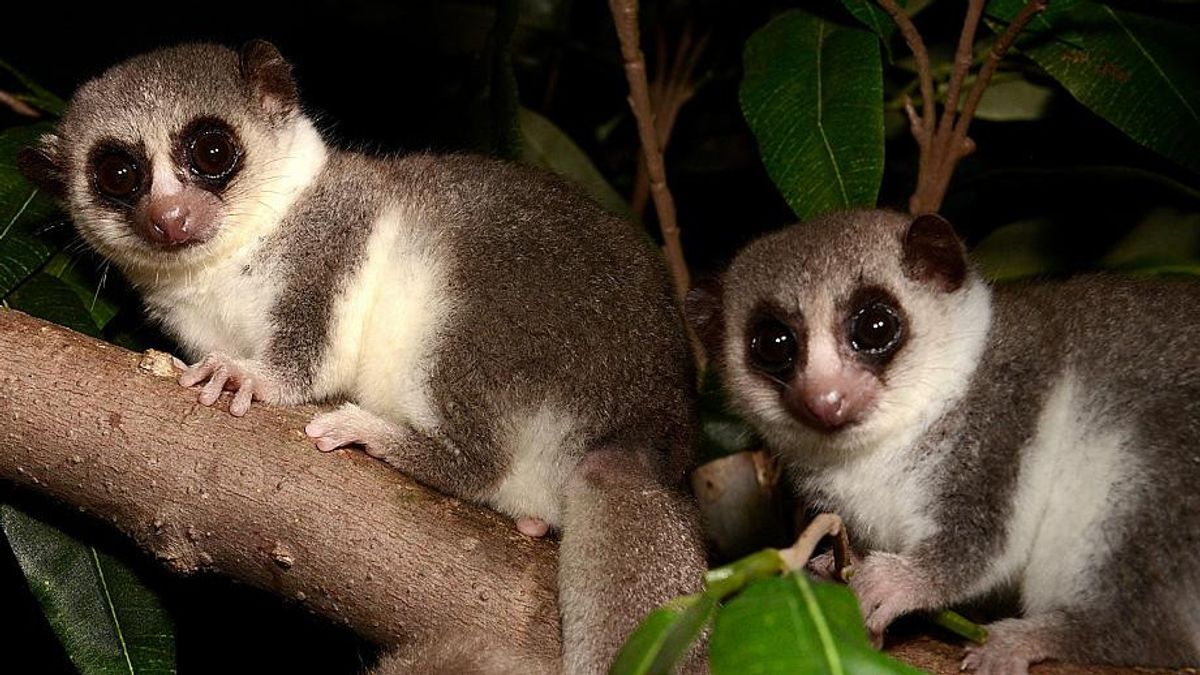JAKARTA - The stubby-tailed pygmy lemur, the only primate known to hibernate, has awakened after entering this state for the first time in captivity.
This year, the stubby-tailed pygmy lemur has gone into true hibernation at the Duke Lemur Center in North Carolina, United States, with the findings perhaps also important for humans.
Hibernation is a fundamental part of the lives of many species, but it rarely occurs when animals are not in the wild.
Usually, captive pygmy lemurs are fed extra during the summer period to help them escape, as they usually do in the wild, to allow them to enter a state of torpor (low heart rate and body temperature).
However, unlike in the wild, animals rarely survive in these conditions for more than 24 hours.
In 2021, the team at the Duke Lemur Center decided to up the 'bet' and see if it's possible for their fat-tailed pygmy lemur to enter hibernation in captivity.
Led by Marina Blanco, the staff built the tree hollow and gradually adjusted the lighting and temperature to suit the changing seasons typical of Madagascar, where the species originates.
If the animals wake up, they are offered food, but instead they are left alone.
"They did not disappoint. Our pygmy lemurs hibernate like their wild relatives in western Madagascar," Blanco said as quoted by Euronews April 3.
"Hibernation is literally in their DNA," he said.

During periods of hibernation, the stubby-tailed pygmy lemur lives up to its name, surviving off the fat stored in its tail.
Now, the lemurs are starting to wake up, after four months of mostly "metabolic slow motion," thanks to the changing seasons in North Carolina. The animals were between 22 and 35 percent lighter than at the start of the process, but otherwise in good health.
"We've been able to replicate their wild conditions well enough to have them mimic their natural patterns," explains Erin Ehmke, director of research at the Duke Lemur Center.
How can research into lemur hibernation benefit humans? These squirrel-sized creatures are humans' closest living relatives, in terms of going through the hibernation process.
Now that we know hibernation can be achieved in captivity, the researchers believe we can learn a lot from lemurs, including gaining better insight into the metabolic disorders found in humans.
While hibernating mammals can lie still for long periods of time without affecting their health, when humans lie still, our muscles start to atrophy and blood clots start to form.
Human hibernation can have strong medical potential, especially for trauma victims with significant physical injuries. Some scientists think it could be the key to unlocking space travel, making missions to Mars more feasible.
Last year Kelly Drew, a professor at the University of Alaska's Institute of Arctic Biology told the Atlantic, "it's very possible that humans could hibernate."
Why don't animals hibernate in captivity? Usually species that will hibernate in the wild, tend not to do so when they live in zoos and nature reserves. This is because hibernation usually occurs during cold periods, when the animal lowers its body temperature, slows its breathing and heart rate, and enters a period of metabolic depression.
In captivity, however, animals typically live in climate-controlled environments without food scarcity issues, meaning seasonal hibernation is not necessary.
But, the fat-tailed pygmy lemur is unique. So far they are the only primates and the only tropical mammals known to hibernate. This is very unusual, as they are endemic to Madagascar, where the winter period is still tropical with high temperatures.
The species was first discovered to hibernate (or aestivate, i.e. when hibernation occurs during warmer temperatures) in 2004, after researchers at Philipps University of Marburg in Germany published their findings in the journal Nature.
The stubby-tailed pygmy lemur was observed hibernating in tree hollows for seven months of the year, even at temperatures above 30°C. Kathrin Dausmann, lead author of a 2004 paper, found that the success of hibernation depends on how well the animal's tree holes are isolated.
The English, Chinese, Japanese, Arabic, and French versions are automatically generated by the AI. So there may still be inaccuracies in translating, please always see Indonesian as our main language. (system supported by DigitalSiber.id)








